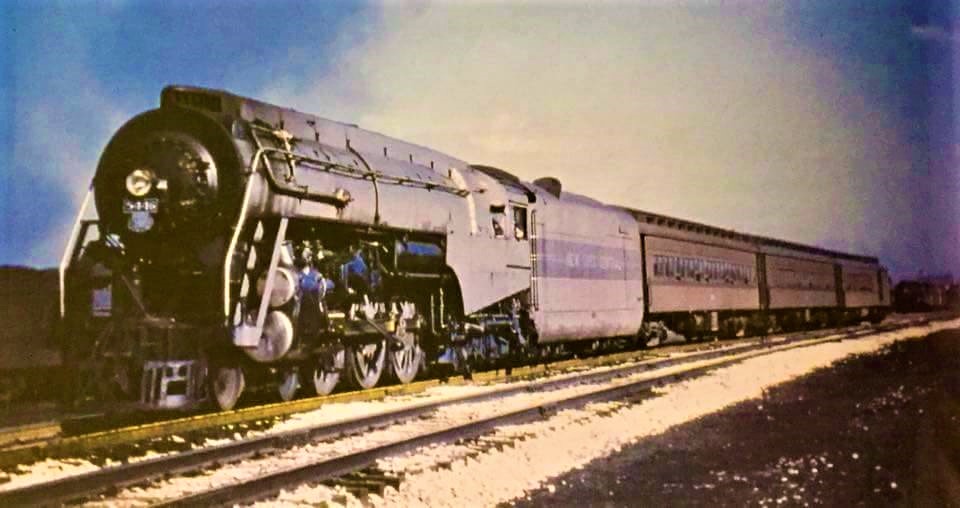Allen Hazen wrote: ↑Fri Jan 10, 2020 9:22 pm
Pennsyfan19--
I've found out a bit more... and, as often happens, the more I find out the more questions arise.
Al Stauffer's book on the New York Central's Hudsons, "Thoroughbreds," has a photo of this locomotive with its de-streamlined front end from June 1938. This means that the grade-crossing accident, or whatever, that destroyed the original front-end streamlining occurred in the first few months of its career (the streamlined J3 Hudsons were, I think, built in early 1938). Since the photo on "Fallen Flags" dates from late 1941, it also means that the 5446 ran in "semi-streamlined" form for over three years.
Query: was its full streamlining ever restored? It would, I think, have been bad p.r. to spend time and money on cosmetic streamlining after December 7, 1941, and the streamlined fleet was destreamlined after the war, so maybe not.
--
I don't suppose that the Dreyfus-Streamlined Hudsons had a second headlight behind the round "nose," but what did the smoke-box door behind the dome look like? In other words, did restoring 5446 to operation after its accident just require mounting a headlight on an existing boiler front, or did a new smokebox door have to be made. Note that at least some Hudsons later received "Selkirk front ends," with flat smokebox fronts like the ones on the Niagaras.
---
You may have answered your own question by not looking closely enough. If the information presented on this thread holds up, 5446 was built in 38, damaged in 38/early 39 (Thoroughbreds pic/date), rehabbed in a few months (pic posted by Fahey dated as 1939), and damaged again by Sept 41, and lost streamlining altogether in 47.
If you look at the 39 pic, the smokebox front is relatively clean for a short but well-defined distance behind the nose seam and nose is also relatively clean, so I'd guess the nose streamlining was restored relatively close to the picture date. A July 46 pic of the engine shows the front end streamlining restored but the shroud over the right main reservoir gone, so the streamlining was largely maintained even until just a year before the program was abandoned. So it would seem that incidents were as common for Hudsons as they are for any train today, and NYC was probably accustomed to replacing the streamlining more than you'd think. IIRC I have a pic of the streamlined engines without their 'dress' somewhere and the smokebox front was somewhat similar to the later Mohawk/Niagara fronts, but not as 'finished'. No second headlight underneath and West Albany and Collinwood probably had a stack of standard J-3 smokebox fronts and other spare parts on the lot so it probably wasn't a big deal to temporarily substitute a regular front after removing the damaged streamlining. The streamlining being a relatively rare item, they probably didn't keep a large inventory of spares on hand, maybe even had to order spares as needed from Schenectady after an initial small inventory was exhausted.
I can almost picture a fresh nose cone loaded on a truck and a second truck with the pilot cover making the short trip from Schenectady to West Albany. It would have been a rare event and of such short duration (maybe 45 minutes total even back then) that there probably aren't any pictures of it happening, but maybe someone will surprise us. Of course that brings up another question - did West Albany regularly send a local job back and forth to Schenectady for a parts/delivery run or use trucks? And how far back would they have switched to trucks for short runs like that?
Other points of interest - The temporary plain fronts are completely barren of other hardware like marker brackets, etc. - just a front with headlight/numberboard/oval and cut levers, and on de-streamlining in 47 the feedwater heaters were changed from Elesco to Worthington.
